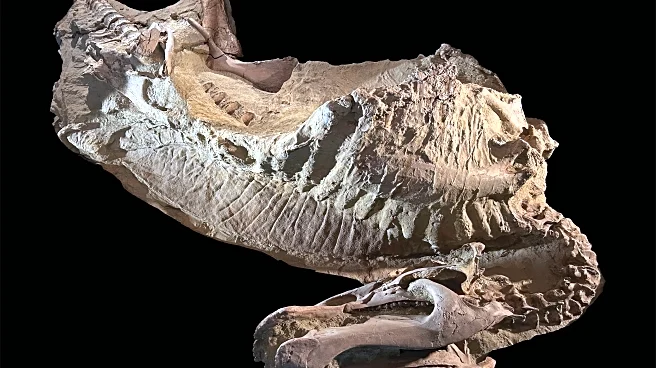What's Happening?
An international research collaboration has discovered a gene mutation in CPD that plays a significant role in a rare inherited form of hearing loss. The study, published in the Journal of Clinical Investigation,
involved researchers from the University of Chicago, the University of Miami, and several institutions in Turkiye. The CPD gene, known for modifying proteins, also impacts the inner ear, leading to sensorineural hearing loss (SNHL), a congenital condition causing permanent deafness. The researchers identified the genetic mechanism behind this effect and proposed two treatment strategies: arginine supplements and sildenafil (Viagra), both of which showed promise in improving cell survival and reducing hearing-loss symptoms in experimental models.
Why It's Important?
This discovery is crucial as it not only identifies a new genetic link to deafness but also offers potential therapeutic avenues for treating this condition. The implications extend beyond the rare inherited form of hearing loss, as single mutations in CPD could be linked to age-related hearing loss. The study highlights the potential for repurposing FDA-approved drugs to treat rare diseases, offering hope for individuals affected by sensorineural hearing loss. The research also underscores the value of using fruit fly models to study neurological diseases and identify therapeutic approaches.
What's Next?
Researchers plan to further investigate nitric oxide signaling in the inner ear's sensory system and explore the prevalence of CPD mutations in larger populations. They aim to determine whether these mutations contribute to other forms of hearing loss or sensory neuropathy. The study's findings could lead to broader applications in understanding and treating age-related hearing loss, potentially impacting a significant portion of the population.
Beyond the Headlines
The study demonstrates the importance of genetic research in uncovering the underlying mechanisms of diseases and developing targeted treatments. It also highlights the potential for existing drugs to be repurposed for new therapeutic uses, which could accelerate the availability of treatments for rare conditions. The collaboration between multiple institutions emphasizes the global effort in advancing medical research and improving patient outcomes.












